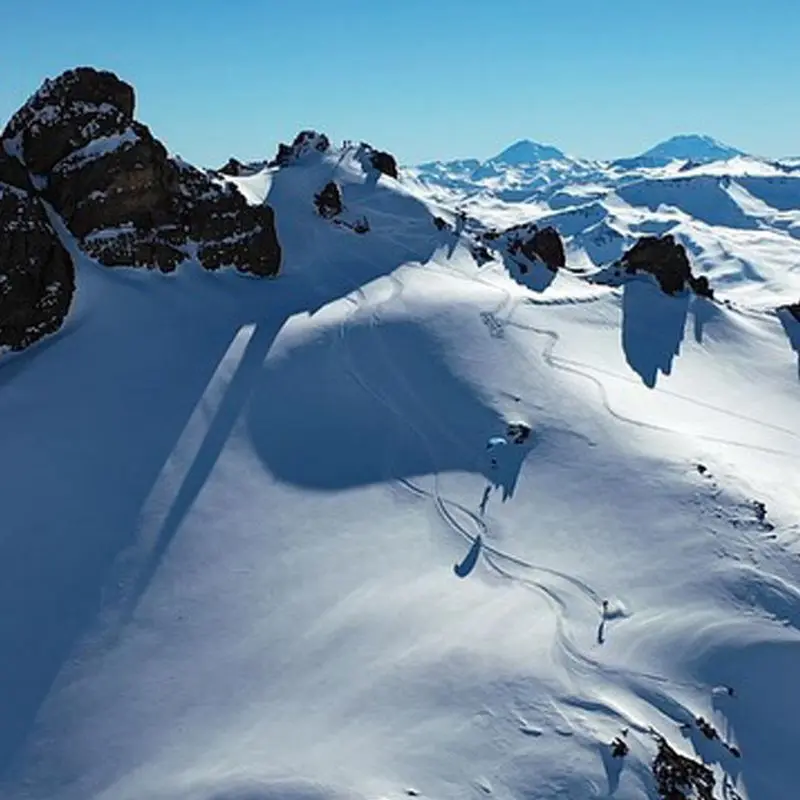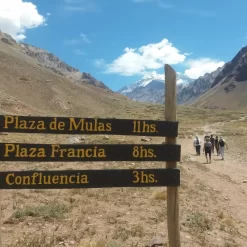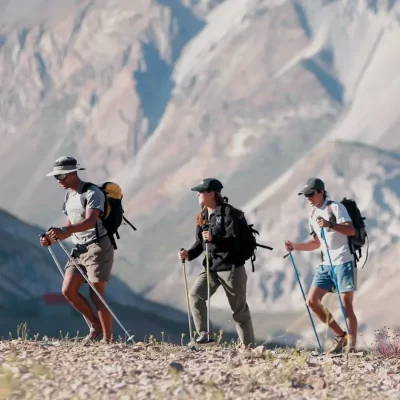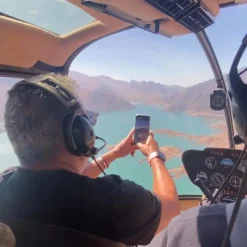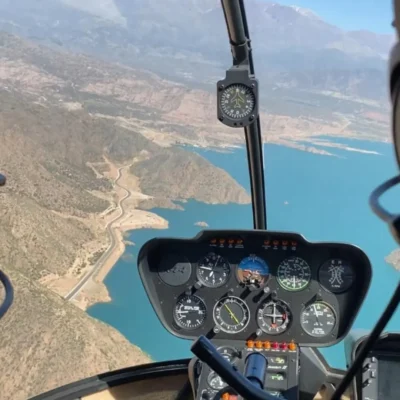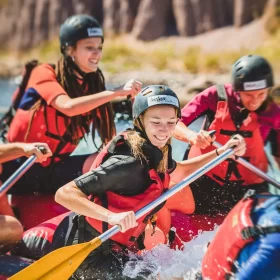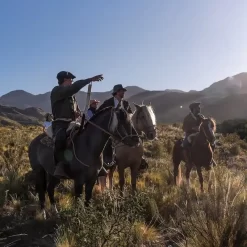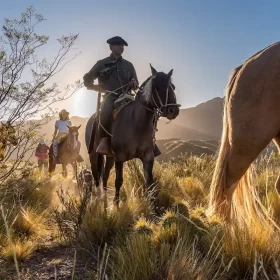Mendoza’s high mountain region isn’t just a tourist destination—it’s a continental-scale experience. Within just a few hours of leaving the city, you can find yourself face-to-face with Aconcagua, crossing a natural bridge once used by the Incas, or hiking among ancient glaciers. This guide is designed for travelers like you, who are just starting to plan their trip and want trustworthy, useful, and in-depth information—something beyond the generic travel sites.
What Is the High Mountain Region of Mendoza and How to Get There
Mendoza’s high mountain zone stretches across the western edge of the province, from Potrerillos to the Chilean border. It follows National Route 7, the international corridor that connects Mendoza with Santiago, passing through places like Uspallata, Puente del Inca, Penitentes, Aconcagua Provincial Park, and Las Cuevas.
Distances from Mendoza city make it ideal for day trips or short getaways:
| Destination | Distance from Mendoza City | Estimated Travel Time |
|---|---|---|
| Potrerillos | 69 km | 1 h 10 min |
| Uspallata | 113 km | 1 h 45 min |
| Puente del Inca | 180 km | 2 h 45 min |
| Aconcagua Park | 185 km | 3 h |
| Las Cuevas / Cristo Redentor | 200 km | 3 h 15 min |
This corridor includes some of the most breathtaking scenery in South America and offers a chance to combine mountain adventures, history, wine, and relaxation—all within a few days and supported by strong tourism infrastructure. If you want to plan your visit based on the season, check out this guide to the best time to visit Mendoza.
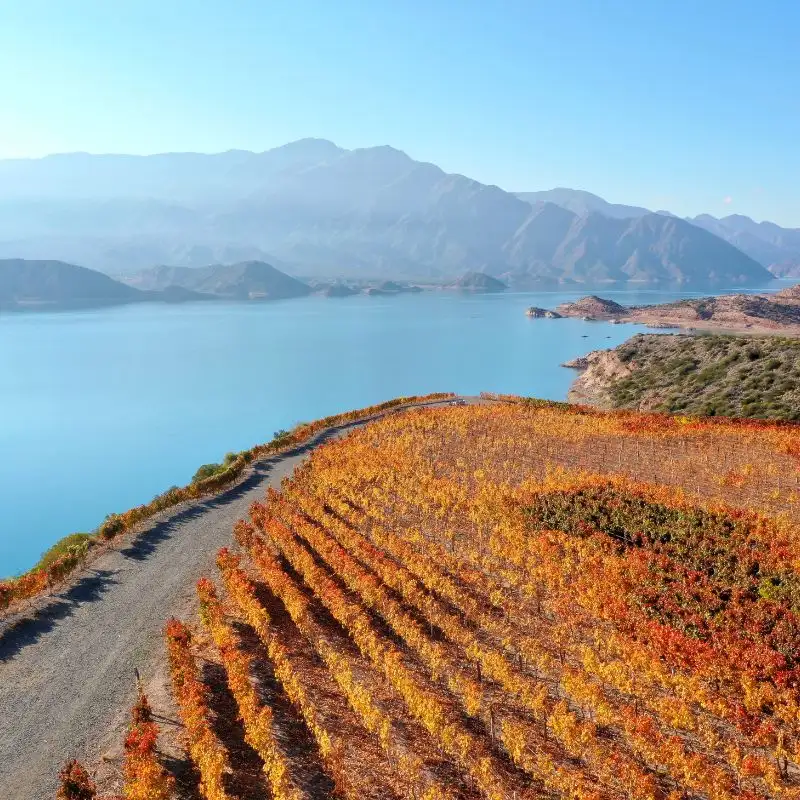
Aconcagua Provincial Park: Nature at Its Purest
Aconcagua Provincial Park is the heart of high mountain Mendoza. It spans more than 70,000 hectares and protects glaciers, wetlands, and the highest peak in the Americas: the mighty Aconcagua at 6,962 meters (22,841 feet) above sea level.
But you don’t need to be a climber to enjoy it. There are several routes for different kinds of visitors:
- Laguna de Horcones: a short, well-marked trail suitable for all ages, offering stunning reflections of Aconcagua in the water, surrounded by silence and raw beauty.
- Confluencia: a moderate, 7-8 hour round-trip hike to the first base camp, offering a taste of the mountaineering world.
- Plaza Francia / Plaza de Mulas: multi-day treks for experienced hikers with overnight stays in organized camps.
- Bonete Summit: a high-altitude goal for those seeking adventure without attempting Aconcagua’s full ascent.
The official trekking season runs from November to March and requires permits depending on your activity. Outside of this period, the park is closed due to snow and extreme weather. To check forecasts and seasonal access, visit this detailed guide to high mountain weather.
In winter, while the trails are closed, you can still appreciate the park from National Route 7. Natural viewpoints near the park entrance offer excellent photo opportunities of the snow-covered peak and the vastness of the Andes—no entrance necessary.
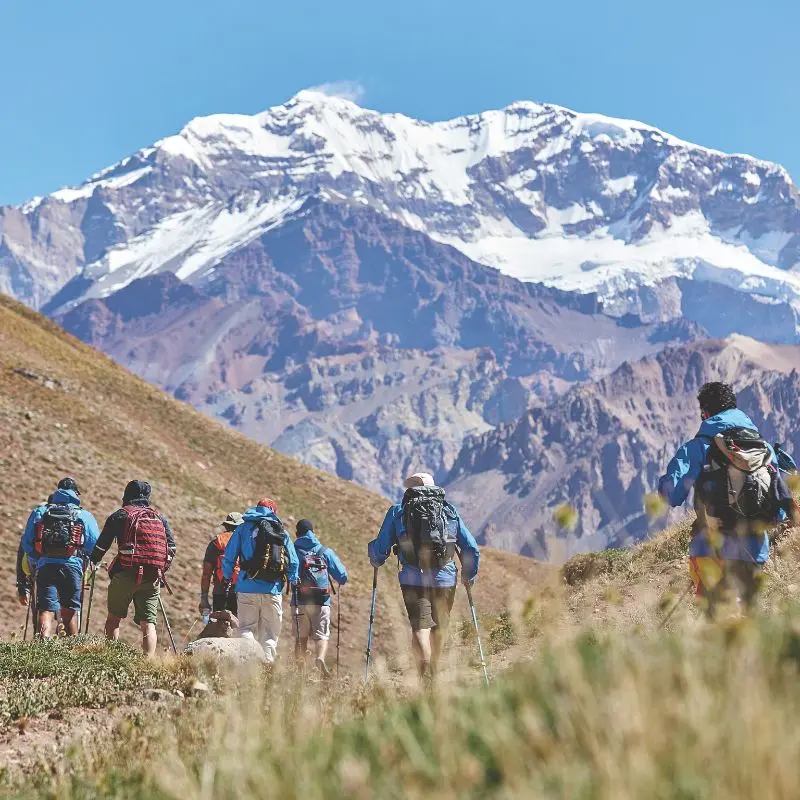
Puente del Inca: History, Geology, and Living Legend
At 2,700 meters (8,858 feet) above sea level, Puente del Inca is more than a geological curiosity—it’s a place rich in history, legend, and cultural value. It’s a natural formation of travertine and mineral deposits that spans the Las Cuevas River and was used as a crossing by Indigenous peoples and General San Martín’s Army of the Andes.
In the 19th century, it became a thermal spa and railway station. Ruins of the old bath hotel are still visible today. Its natural and cultural significance earned it a nomination as a UNESCO World Heritage Site and made it part of a protected bi-oceanic corridor.
Walking on the bridge is no longer allowed to preserve it, but interpretive trails, viewpoints, and artisan stalls make it a fascinating stop.
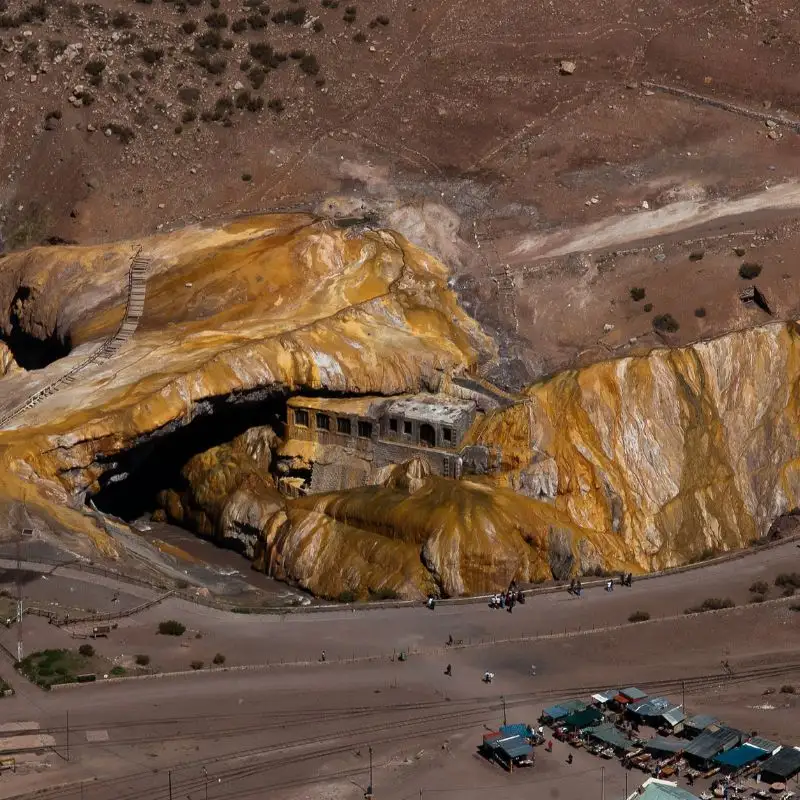
Cristo Redentor Tour: A Symbolic Journey
The Cristo Redentor de los Andes stands at 3,832 meters (12,572 feet) on an international mountain pass once used by San Martín’s liberating army. Inaugurated in 1904 as a symbol of peace between Argentina and Chile, it remains one of the region’s most meaningful sites.
The road to the summit is open between January and March, and the journey—whether by guided tour or 4×4—offers panoramic views of Las Cuevas gorge, the northern face of Aconcagua, and snow-dusted valleys. It’s a trip that blends history, geography, and symbolism in one unforgettable experience.
Snow Parks: Winter Fun at Los Puquios and the Future of Penitentes
In winter, the landscape transforms into a snow-covered postcard. The most accessible family-friendly snow park is Los Puquios, just minutes from Aconcagua.
It offers sledding, beginner ski slopes, equipment rental, ski lessons, and snow play areas for kids. While not a traditional ski resort, it’s ideal for those who want a safe and simple way to enjoy the snow.
Nearby, the historic Penitentes Ski Resort—opened in the 1970s—has been closed since 2020. However, the provincial government has announced plans to convert it into a sustainable tourism site focused on year-round activities like hiking, nature tours, and high-altitude sports. It’s a project in progress with great potential.
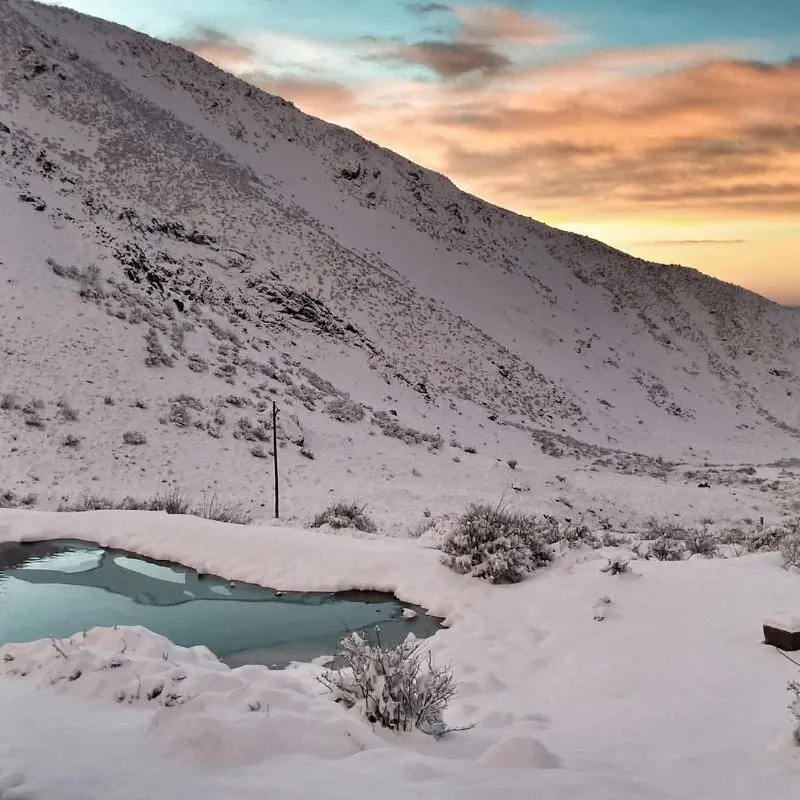
High Mountain Flora and Fauna: Extreme Adaptation
At first glance, Mendoza’s high mountains may seem barren. But the biodiversity here is subtle and resilient, adapted to intense UV radiation, dry winds, and freezing temperatures.
Notable animal species include:
- Andean condor: the largest flying bird in the world, with a wingspan of up to 3 meters.
- Guanacos: camelids that roam in herds, grazing on mountain grasses.
- Red foxes, high-altitude lizards, chinchilla rats, and, in remote areas, the elusive puma.
Plant life includes coirón grasses, Andean verbenas, llareta cushions, high-altitude shrubs, and lichens. Each species blooms depending on elevation, sun exposure, and soil moisture. It’s a fragile ecosystem best appreciated with knowledgeable nature guides.
Living Andean Culture: Traditions of the Cordillera
This region has been inhabited for centuries by the Huarpe and Pazioca peoples and was later traversed by Argentina’s independence army. In Uspallata, you can still find Inca-era smelting ovens and local legends about hidden gold.
Today, high mountain culture lives on in festivals, traditional food, stories from local guides, and crafts passed down through generations. Many excursions include not just geographic insights, but oral history that connects visitors to the living heritage of the Andes.
For a broader perspective on how to plan a culturally rich visit to Mendoza, check out this complete guide with travel tips for Mendoza.
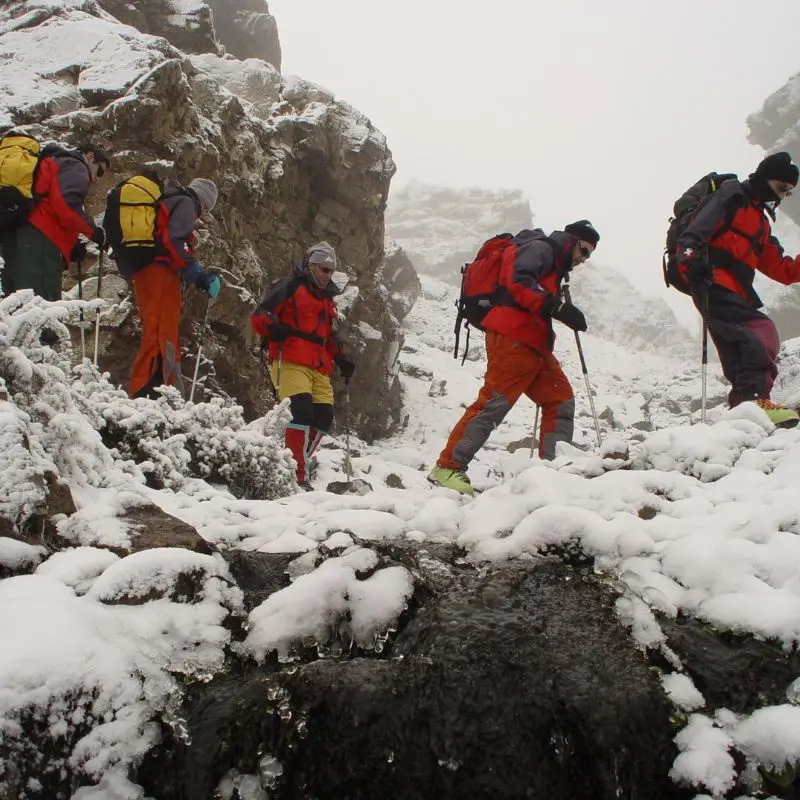
When to Visit the High Mountains of Mendoza
The ideal time to explore the high mountains is from November to March, when the roads are open, the weather is more stable, and the parks are accessible. In winter, snow and ice can temporarily close some routes.
Spring and fall are great options for milder temperatures and fewer crowds, though the Zonda wind—a warm, dry gust—can bring sudden weather shifts. Always check the forecast before heading out. For a detailed seasonal breakdown, see this guide to weather in the high mountains.
Suggested Itinerary: High Mountains, Wine, and Adventure in 6 Days
For a well-rounded experience, the 6-day adventure package by SAK Wine & Travel combines the best of Mendoza’s high mountains, Uco Valley, and outdoor thrills in Potrerillos.
- Day 1: Arrival in Mendoza and private transfer to your hotel.
- Day 2: Full-day high mountain tour along Route 7 with stops in Uspallata, Puente del Inca, Potrerillos, and a walk in Aconcagua Provincial Park.
- Day 3: Wine day in Uco Valley with visits to boutique wineries and gourmet lunch.
- Day 4: Adventure day in Potrerillos: choose between rafting or horseback riding.
- Day 5: Free day with optional activities like cooking class, mountain biking, or spa.
- Day 6: Departure and private transfer to the airport.
A balanced, flexible plan for travelers who want authenticity without giving up comfort.
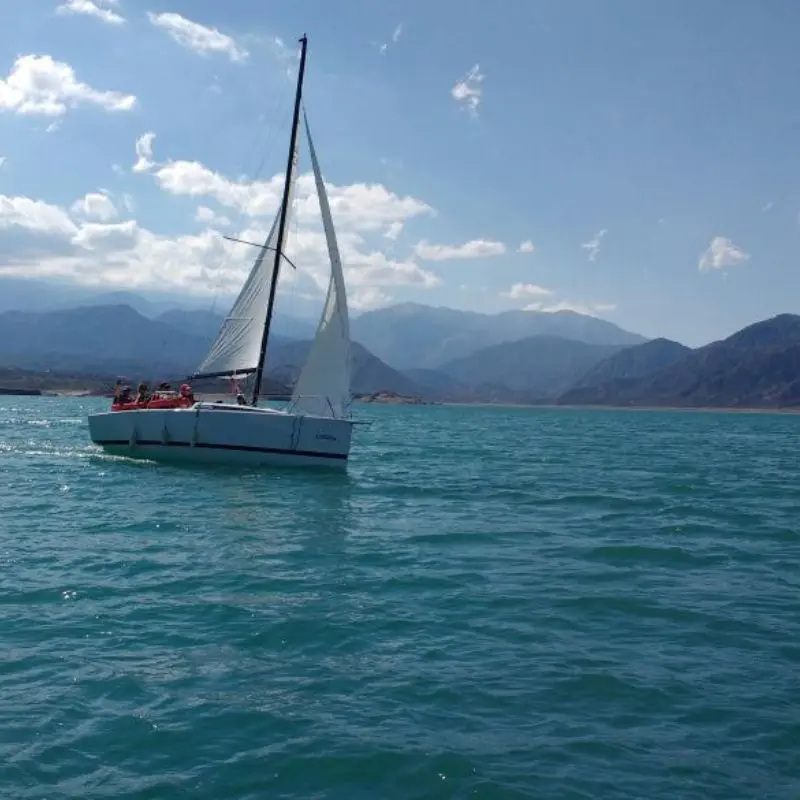
How Much Does It Cost to Travel to Mendoza’s High Mountains?
Costs vary depending on the season, accommodation type, and whether you rent a car or book guided tours. For a realistic breakdown based on your travel style, check out this detailed budget guide by traveler type.
Enjoy the best adventures in Mendoza
Aconcagua Climb
Adventure
Adventure
Ready to Experience Mendoza’s High Mountains Like an Informed, Responsible Traveler?
Don’t settle for the basics. Plan with intention, choose experiences tailored to your interests, and trust those who truly know the region.
For more details on tours, safety, and unforgettable experiences, explore this complete guide to high mountain excursions.

Paula is a travel communications specialist with solid expertise in wine tourism and adventure travel in her native Mendoza. She combines a background in audience analysis with a deep understanding of today’s travelers to craft effective, user-centered, and sustainable content strategies. Her approach blends creativity, data, and a strong commitment to the responsible development of tourism in Argentina.


